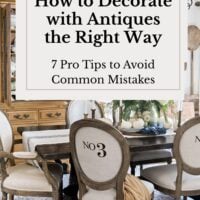When decorating with antiques, there’s a fine line between “grandma’s house,” a mismatched college apartment, and a layered home that feels intentional.
One friend of mine inherited so many matching pieces that her living room feels like a time capsule — all she’s missing are the plastic covers on the sofa! Another has wonderful family heirlooms, but they’re scattered together with random thrift finds and nothing connects, so the whole space feels more like a starter apartment cobbled together from freebies than an intentional design.
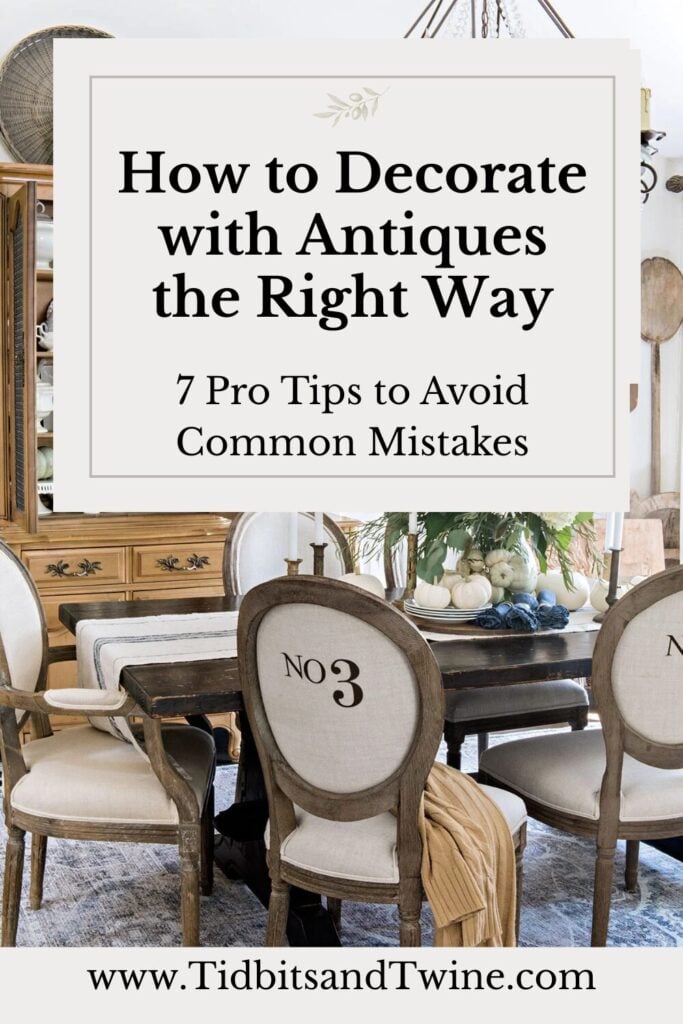
The truth is, both extremes miss the mark. Too much matching and the room feels stiff and dated. Too little cohesion and it feels like clutter instead of character. The magic happens somewhere in between — when antiques are styled with thought and balance so they bring warmth, depth, and history without overwhelming the space.
I’ve been guilty of both ends myself. I’ve tried to “fix up” antiques until they lost their charm, and I’ve also crowded too many little treasures onto a shelf until it felt chaotic. But each mistake has been a lesson, and over time, I’ve learned what works. Today, I’m sharing the most common antique styling mistakes I see (and have made!) — plus what to do instead so your antiques look intentional, timeless, and part of a collected home.
1. Antique Styling Mistake: Everything Matches Too Much
It’s tempting to stick with one style or period when decorating with antiques, but when every piece matches, the room can feel stiff and predictable. Instead of collected, it starts to look like you bought an entire set all at once — and that sameness can quickly feel dated.
What to do instead: Mix things up! Blend different eras and styles, but tie them together with a unifying thread such as a color palette, finish, or silhouette. A rustic pine chest looks gorgeous under a refined French mirror if they share similar tones in their patina. If you love mixing styles—but want it to look intentional—peek at my article A Guide to Mixing Furniture Styles: 5 Expert Tips for simple strategies like matching colors, shapes, or scale to make your mismatched pieces feel connected without being matchy.
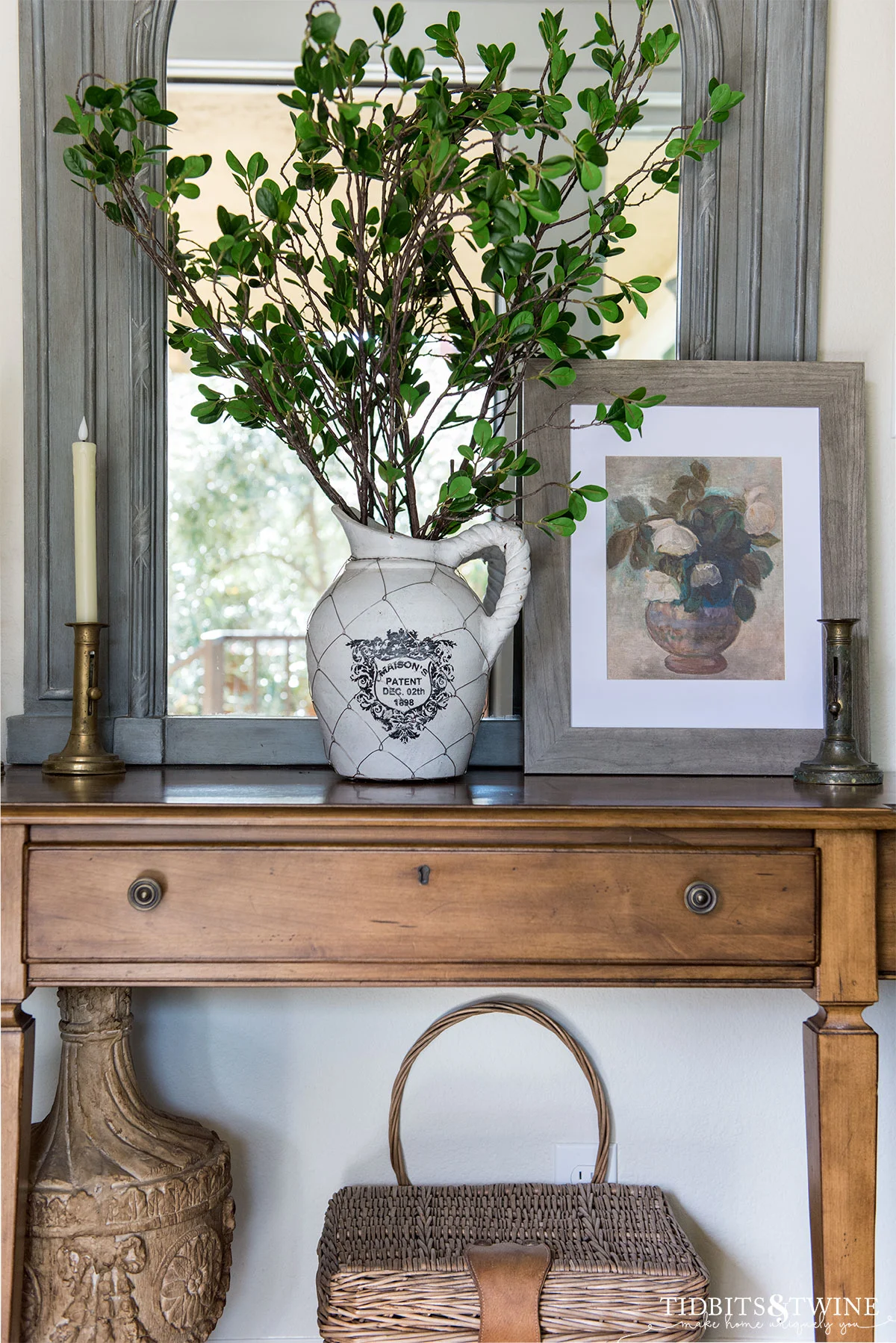
2. Ignoring Scale and Proportion
Many antiques were built on a smaller scale than today’s furnishings. Chairs often sat lower, dining tables were shorter, and armoires were narrower. Without realizing it, you can end up with mismatched seating heights or dainty tables that look lost next to today’s oversized sofas.
What to do instead: Always consider proportion in context. Group smaller antiques together so they carry more presence, and measure carefully before pairing dining chairs and tables. A tape measure may not sound glamorous, but it’s your best styling tool.
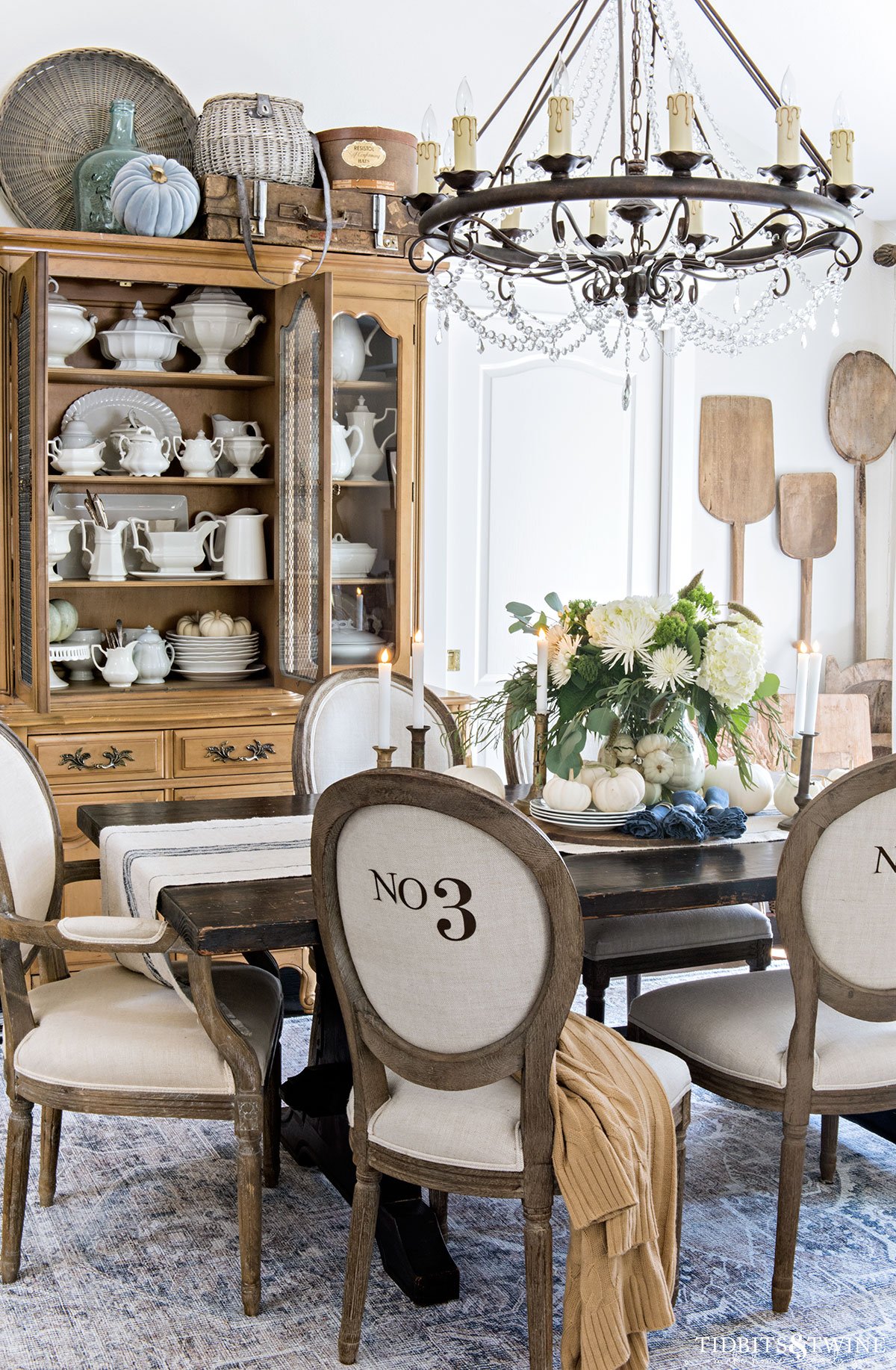
3. Overpolishing or Refinishing Everything
It’s easy to want to “freshen up” antiques, but sometimes the very marks we try to erase are what make them beautiful. Overpolishing brass until it gleams or sanding wood down until it looks brand-new can strip away the story of the piece. According to Antique Collectors’ Club, patina is often what gives antiques their value
What to do instead: Clean gently and sparingly. Embrace patina, dings, and worn edges — they’re part of what makes antiques feel authentic. Unless something is structurally unsound, it’s usually best to leave the history intact.
4. Not Mixing in Modern Elements
If every item in a room is antique, the space can start to feel more like a museum than a home. Beautiful, yes, but also heavy and a little dated. Antiques shine brightest when they have something modern to play against.
What to do instead: Add contrast! Pair an ornate vintage console with sleek artwork, or style an antique armchair with a bold linen pillow. Mixing in clean lines, contemporary lighting, or fresh textiles keeps antiques feeling lively and intentional.
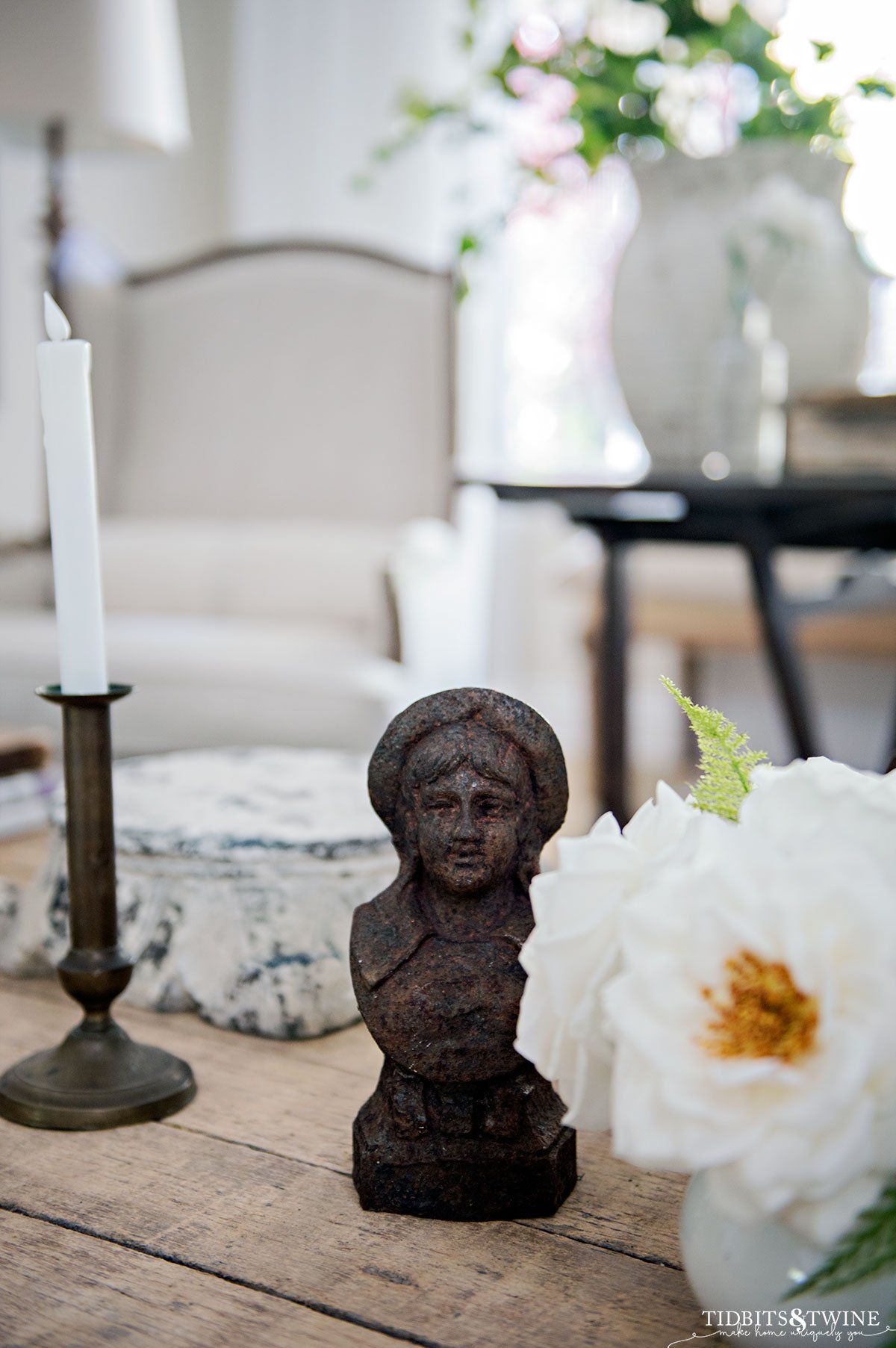
5. Using Antiques Solely as Decor
Sometimes antiques are treated as “too precious” and end up displayed on shelves or tucked away behind glass. But antiques were built to be used, not just admired.
What to do instead: Put them to work. Serve appetizers on an old breadboard, store throws in a vintage trunk, or let the farmhouse table be where homework, crafts, and coffee all happen. Everyday use adds charm and continues the story.
6. Not Giving Pieces Room to Breathe
One of the biggest antique styling mistakes is overcrowding. When surfaces are overcrowded, even the most beautiful antiques get lost. A mantel crammed edge to edge or a cabinet overflowing with smalls leaves the eye nowhere to rest. That’s when collected becomes cluttered.
What to do instead: Edit with intention. Group in odd numbers (a trick I explain in The Rule of Odds) and allow for negative space so the eye knows where to land. If you’re not sure where to draw the line, my post on creating a collected look without clutter has practical tips and examples.
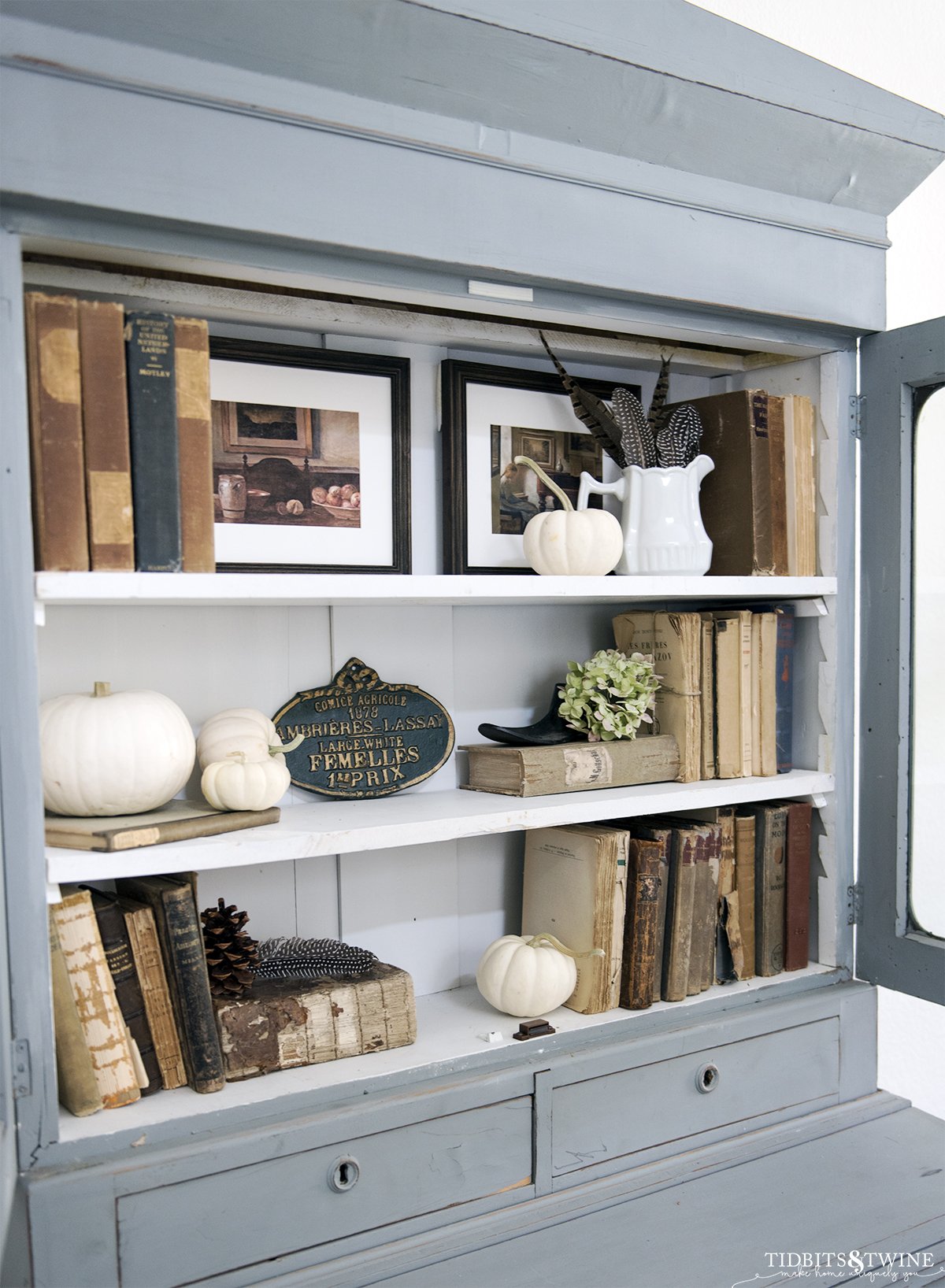
7. Skipping the Personal Connection
Sometimes we style with antiques simply because they “look vintage” or are trendy, but without personal meaning, they can leave a room feeling staged. The most inviting homes are the ones filled with pieces that matter.
What to do instead: Choose antiques that tell your story. Whether it’s a family heirloom, a flea market find from a trip, or a piece that simply speaks to you, meaningful pieces add soul — and guests always sense the difference.
Last summer in Florence, I almost passed up an antique wooden sign because I had absolutely no need or use for it. Luckily, my husband talked me into buying it, and now it makes my heart sing every time I see it. Beyond being beautiful, it reminds me of a wonderful afternoon shopping with him in one of my favorite places in the world.
Antiques don’t need to be intimidating. With the right styling, they bring warmth, texture, and history in a way no new piece can. Avoid these common antique styling mistakes, and your home will feel layered, curated, and timeless — a place where the past and present live beautifully together.
FAQ About Styling Antiques
It’s all about contrast and balance. Pair ornate with simple, warm with cool, and let each style highlight the other.
Measure carefully — many antiques run smaller than today’s pieces. Check for stability, drawer function, and seat or table heights to ensure they’ll work seamlessly in your home.
Often, yes. Refinishing can strip away patina and craftsmanship details. Unless it’s structurally necessary, a gentle clean is better than a full refinish.
Absolutely! Many were built with sturdier craftsmanship than what’s mass-produced today. They’ll hold up beautifully — just treat them with care.
Mix in modern textiles, art, and lighting. The contrast keeps things lively and makes your antiques stand out even more.

Join the Community
Let’s keep in touch! Get exclusive artwork plus the latest news delivered directly to your Inbox!

